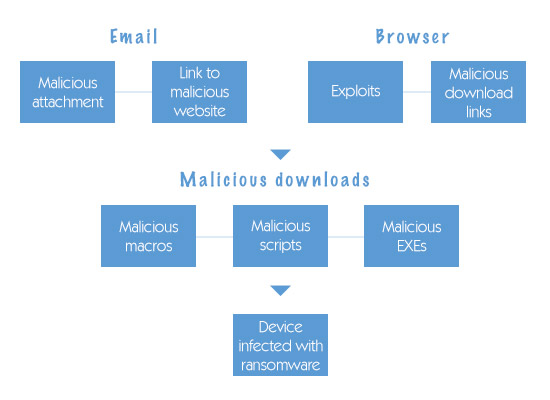KEY FACTORS TO THINK ABOUT WHEN CHOOSING OPEN SOURCE MALWARE ANALYSIS TOOLS
Updated on October 21, 2022, by Xcitium
Experts use open source malware analysis tools to shield from future attacks. They foresee malware attacks and share learning with each other. It is an obvious fact that circulating malware is a major business. The rising malware epidemic is only going to develop in capacity and skill in the coming years.
Malware trading forums multiply on the dark web. It has become easier than ever to get the botnets and zero-days needed to pull off high-level attacks. The complexity of variations grows. It becomes harder for free open source malware analysis tools to understand each one.
Experts use open source malware analysis tools to characterize and report malicious activities. They are doing these while finding out about the attack lifecycle.

Open Source Malware Analysis Tools: Rules
Open source malware analysis tools classify malware samples based on binary patterns. They do this once they passed through examination. Using open source malware analysis tools, analysts write descriptions of malware families. These descriptions are rules. It enables researchers to recognize and classify similar variations of malware. Rules integrate malware to use inside a sandbox.
Endpoint detection and response framework helps to identify the malware samples encountered. Rules classify them and later share the finding with clients and the network.
Open Source Malware Analysis Tools: Sandbox
A sandbox is a malware analysis system. It is an open source platform that automates malicious file analysis. It gives detailed feedback about how each file behaves in isolated environments.
Malware detection groups and security organizations use a sandbox. It helps ease the strain of wading through malicious files. Its modular design makes it adjustable for both reporting and processing stages. It has turned out to be the most used open source malware analysis tools in recent years.
Open Source Malware Analysis Tools: Reverse Engineering
These open source malware analysis tools are a one-stop-shop for analysts. Reverse engineering incorporates many open source malware analysis tools into one. It enables researchers to examine browser-based malware and perform memory forensics. It analyzes many malware samples, extracts, and decode suspicious items and more.
Open Source Malware Analysis Tools: Incident Response Framework
An incident response framework examines specific workstations for malware footprints. It comprises an agent that’s deployed on the target system and server infrastructure. It can start to get messages from the front end servers. It makes it simple to investigate individual systems. The incident response group can perform different forensic tasks on the client machine. For instance, analyzing the memory, searching for different settings, and managing setup alternatives.
Open Source Malware Analysis Tools: Network-Based Analysis Framework
Network-based analysis framework transforms network traffic into events to trigger scripts. It is like an intrusion detection system. It gives users a perspective of their network activity. It uses both signature-based and anomaly-based detection. Its capacities reach far beyond those of conventional IDS. It conducts forensic investigations, network monitoring, and protocol analysis.
The list of open source malware analysis tools keeps on growing and maturing every day. As long as cyber attacks turn a profit, cybercriminals will perfect their strategies. As a result, organizations will keep on falling prey. Thanks to the efforts of open source malware analysis tools creators. Analysts can share data and experiences. They can cooperate, creating a more secure tomorrow.
Xcitium Cybersecurity is a pioneer and developer of cybersecurity solutions. Xcitium Cybersecurity helps in the fight against digital attacks. It is doing this by building up a free forensic analysis service for organizations.
Xcitium Forensic Analysis can enable organizations to discover undetected and unknown malware. Malicious software could cause serious cybersecurity issues. Xcitium Forensic Analysis analyses unknown ones. It decides whether they are good or bad.
Xcitium Forensic Analysis flaunts an industry-leading platform. This forensic analysis can analyze all files. Xcitium Forensic Analysis enables organizations to uncover unknown malware in their environments. This will enable organizations to see the power of Default Deny technology.
Xcitium Forensic Analysis uses an award-winning Default Deny platform. The forensic analysis service is a piece of Xcitium Cybersecurity’s Advanced Endpoint Protection. Xcitium Forensic Analysis does not allow files to execute on endpoints by default. It is as opposed to other security solutions. Xcitium Forensic Analysis does not rely upon known bad file indicators. An all-out forensic analysis results in a positive or negative decision on each file.
Xcitium Forensic Analysis’ innovation shields unknown files from executing with automatic containment. Xcitium Forensic Analysis ensures that it is without any unknowns. It includes already unfamiliar malware. The result is a genuine deterministic decision.
The executive summary gives information on the threats revealed by Xcitium Forensic Analysis. It gives significant results. This evaluation gives IT security specialists the exact information they need. Xcitium Forensic Analysis will help in protecting their environments from advanced persistent threats.
Test drive them today by scheduling a demo: https://enterprise.xcitium.com/.
Related Resources



